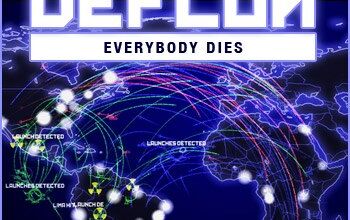Editorial: In Defense of: The Detroit Bailout

As the domestic auto companies appear to be circling the drain, there’s been debate about the extent of the impact of their failure on their supplier base, the impact on the industrial manufacturing base of the United States, even possible negative implications for Toyota and Honda. One party in all this that has rarely been mentioned are the consumers. While a few automotive analysts, pundits and bloggers have touched on how an implosion of the Detroit based car companies will affect consumers, almost all of the discussion has centered on whether or not people will buy a car from a bankrupt manufacturer, and the related issue of how product warrantees will be covered if their manufacturers go belly-up. A more basic consumer issue: how the loss of GM, Ford and Chrysler from the US auto market would affect the prices, features and technology of new cars.
While some critics of the domestics would have us believe that nobody is interested in cars built by the domestics, the fact remains that The Big 2.8 still sell millions of new cars a year in the North American market. October was a sales disaster for the domestics, with GM’s year to year sales falling 45 percent, Ford 33 percent and Chrysler seeing a decline of 37 percent. Foreign brands also saw declining sales but the decline was not as steep. With consumer confidence at the lowest level since just after the 9/11 attacks by Al-Qaeda, sales will not likely pick up anytime soon. The overall industry is on pace for a 10.6 million unit year, down from 16 million in 2007, and down over 40 percent from the record year of 2000. Still, between them the domestics sold just about 400k cars in October, good for 55 percent of the total US car & light truck market.
It’s a simple fact of business that competition puts downward pressure on prices. Critics of any bailout for the domestics like to say how their customers won’t go away; they’ll just buy Toyotas, Hondas, Nissans and Hyundais. What they don’t say is how much more expensive Toyondisssandais will be without competition from GM, Ford & Chrysler. You simply cannot remove competitors with a 55 percent share of a market without seeing the remaining vendors raise prices. Without competition from domestic competitors, the foreign brands have much less of an incentive to keep their prices down. Also, the structural costs of the domestics (at least until the cost reductions due to renegotiated UAW contracts kick in in 2010) create a price ceiling foreign brands can undercut. Take away that ceiling and watch Toyota raise its prices.
Conversely, take away that structural cost disadvantage for the domestics and you’d see lower prices right now on all brands, foreign and domestic, because of real price competition. Look at India. That market is very price sensitive. Just about all the global manufacturers are active in India, but the growing indigenous Indian auto industry led by Tata and Mahindra creates price competition for the transplants. Since Tata announced the sub $3000 Nano, Renault-Nissan, which already produces the low cost Dacia Logan, has announced a joint venture with Bajaj, maker of scooters and three-wheelers, to compete with the Nano at the new entry level price point.
A Detroit meltdown would affect more than just new car pricing. Say what you will about the domestics, but their presence in the market forces the other manufacturers to compete on features and technology as well as price. I’m not saying that a disappearance of The Big 2.8 would return the days of “radio and heater optional,” but there’d be less incentive for remaining companies to keep content level high. The Honda Accord’s initial market success in the late 1970s was partly attributable to a higher level of standard equipment than the domestics offered.
Regarding technology, the list of innovations introduced to the market by the domestics and their suppliers is almost endless: electric starters, seat belts, catalytic converters, modern refrigerants, car audio, defoggers (forced hot air and electrically heated), turbochargers, magnetically controlled dampers/shocks, and on and on. Without the billions the domestics spend on R&D ($15.6b for Ford & GM in 2007, not counting Chrysler which is privately held and doesn’t publish proprietary data or the moneys spent on R&D by domestic auto suppliers) the pace of technological improvements will slow significantly.
The domestic car companies’ disregard of their foreign competitors in the 1970s and their poor quality in the 1980s have so alienated consumers (and their now adult children) that it’s easy to see why so many people either don’t care if the domestics disappear or actively wish for their demise. If they think, however, that such a disappearance will be good for consumers, in terms of price, features and technology, they’re sadly mistaken.

Ronnie Schreiber edits Cars In Depth, the original 3D car site.
More by Ronnie Schreiber
Latest Car Reviews
Read moreLatest Product Reviews
Read moreRecent Comments
- Turbo Is Black Magic My wife had one of these back in 06, did a ton of work to it… supercharger, full exhaust, full suspension.. it was a blast to drive even though it was still hilariously slow. Great for drive in nights, open the hatch fold the seats flat and just relax.Also this thing is a great example of how far we have come in crash safety even since just 2005… go look at these old crash tests now and I cringe at what a modern electric tank would do to this thing.
- MaintenanceCosts Whenever the topic of the xB comes up…Me: "The style is fun. The combination of the box shape and the aggressive detailing is very JDM."Wife: "Those are ghetto."Me: "They're smaller than a Corolla outside and have the space of a RAV4 inside."Wife: "Those are ghetto."Me: "They're kind of fun to drive with a stick."Wife: "Those are ghetto."It's one of a few cars (including its fellow box, the Ford Flex) on which we will just never see eye to eye.
- Oberkanone The alternative is a more expensive SUV. Yes, it will be missed.
- Ajla I did like this one.
- Zerofoo No, I won't miss this Chevrolet Malibu. It's a completely forgettable car. Who in their right mind would choose this over a V8 powered charger at the rental counter? Even the V6 charger is a far better drive.


































Comments
Join the conversation